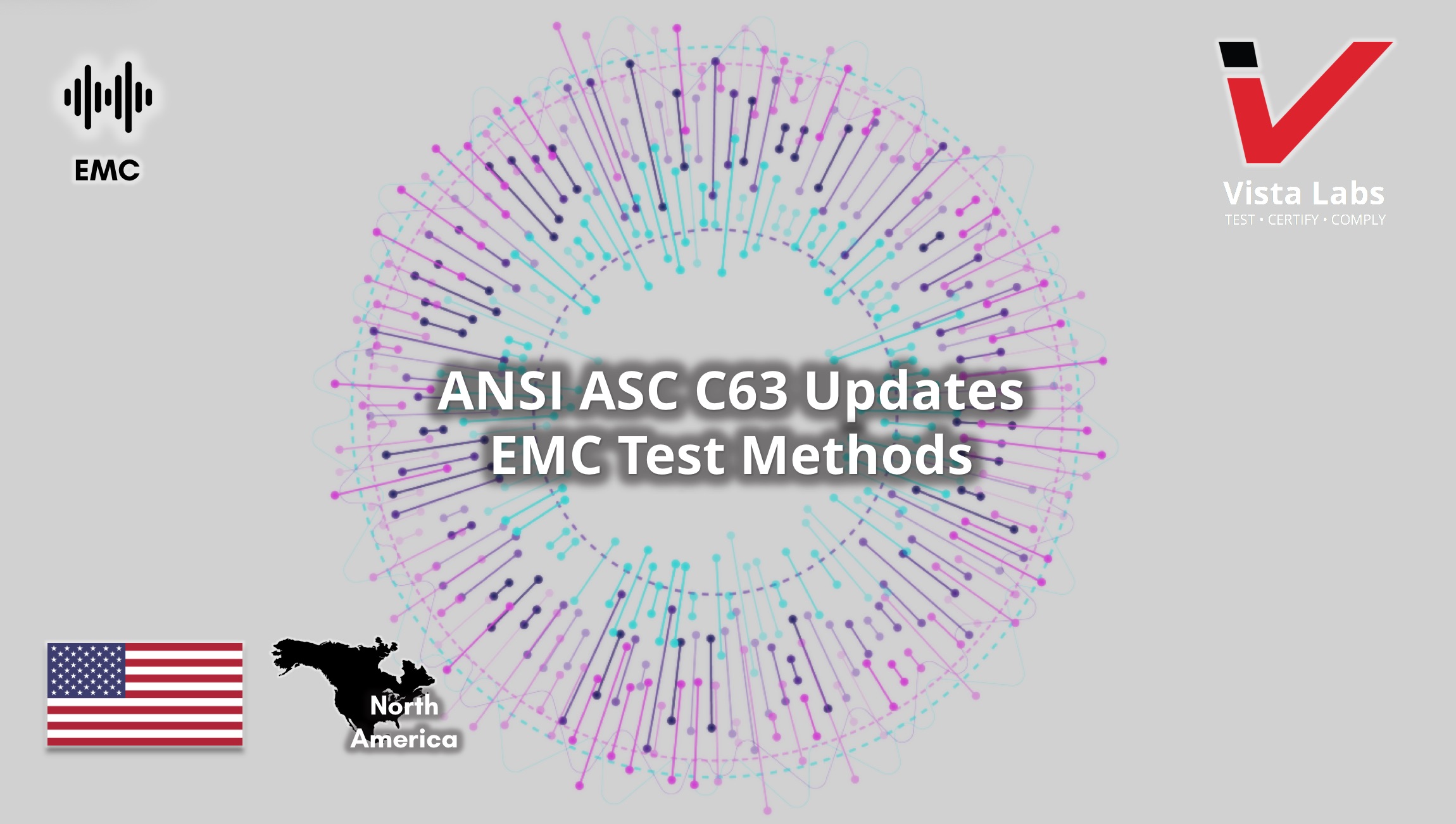The ANSI-Accredited Standards Committee C63 provides updates to standards covering electromagnetic compatibility compliance test methods. The standards that are developed are considered to be American National Standards and imply a consensus of those parties concerned with its scope and provisions.
The intent of American National Standard is to serve as a guide to aid the manufacturer, the consumer, and the general public.
C63.25.1 – New Standard - American National Standard Validation Methods for Radiated Emission Test Sites, 1 GHz to 18 GHz
Published March 29, 2019
The standard introduces a time-domain method that can be used in parallel with the CISPR Site-VSWR (SVSWR) Method from clause 8.3 of CISPR 16-1-4:2017-01.
Advantages of the Time-Domain Method
- Requires less time than the SVSWR method to perform a site or chamber validation
- Gives an indication of where the site or chamber is deficient
- More efficient than the SVSWR method for finding corrective measures to bring the site or chamber into compliance
- SVSWR can be calculated based on measurements taken without the need to move antennas
C63.15 - American National Standard Recommended Practice for the Immunity Measurement of Electrical and Electronic Equipment
Published March 1, 2018
This immunity testing and test instrumentation specification recommended practice complements the procedures for making emission measurements as specified in ANSI C63.4
These immunity test methods can be of use to manufacturers who want to maximize product reliability and reduce customer complaints by improving the immunity of their products, beyond that required by applicable regulations, or by correcting problems experienced in deployment that are not related to regulatory requirements.
This recommended practice generally covers the frequency range 30 Hz to 10 GHz.
Primary Goals
- Identify preferred or optional immunity test methods
- Describe specific measurement techniques
- Suggest product performance criteria as applicable to general and specific products
- Identify test instrumentation specifications
C63.4a – 2017 - Amendment 1: Test Site Validation – American National Standard for Methods of Measurement of Radio-Noise Emissions from Low-Voltage Electrical and Electronic Equipment in the Range of 9 kHz to 40 GHz
It is an Amendment to ANSI C63.4-2014. This was the first Amendment to a “C63 Standard” in the 80 plus year-history of the Main Committee.
The FCC released (April 2, 2019) a Public Notice asking for comments from industry on this Amendment (ET Docket No. 19-48).
United States consensus standard methods are specified in Annex D of this amendment for validating standard test sites and alternative test sites used for measurement of radiated radio-frequency (RF) signals and noise emitted from electrical and electronic devices in the frequency range of 30 MHz to 1 GHz.
In addition, various updates are made to equations in 4.5, Annex F, Annex G, and Annex N.
The measurement distance criterion for electric field strength measurements (1 GHz to 40 GHz) with horn antennas in 4.5.5 (and in table footnotes in 4.5.1) of ANSI C63.4-2014 is modified to as it was in the 1992 edition of ANSI C63.4 and consistent with CISPR 16-1-4 and CISPR 16-2-3.
Updates
- Corrected the equation for calculating the measured NSA value – Equation D.1 of ANSI C63.4 – 2014
- Added text to clarify the single-position NSA geometry for validation of standard test sites
- Added requirements for maximum frequency step-size for both the discrete frequency method and the swept frequency method, also quantified the existing requirement for the receive antenna height scan rate for the swept-frequency method
- For the swept frequency method, added the requirement to report in tabular format those measured NSA values that are within the 1 dB of the site acceptability criterion.
- Removed the provision from D.3 for moving the antenna inward from the periphery for the left and right positions in horizontal polarization
- Added equations to be used for calculating theoretical NSA for an ideal site, which can be used for frequencies and/or geometries other than those listed in the tables
- Expanded the tables of theoretical NSA for an ideal site by adding values for a five-meter horizontal-distance measurement, for greater transmit antenna heights taller than two-meters, and for the frequency increments specified in the measurement procedure sub-clauses
- Updated the figures and added a top-view figure for vertical polarization depicting the re-orientations of the transmit antenna and the receive antenna for the left and right positions of the transmit antenna
ANSI/IEEE C63.27 (C63.27) – 2017 – American National Standard for Evaluation of Wireless Coexistence
An evaluation process and supporting test methods are provided in this standard to quantify the ability of a wireless device to coexist with other wireless services in its intended radio-frequency (RF) environments
“C63.27” was published in May of 2017 and it is a NEW standard for the C63-Committee.
AAMI-TIR 69:2017 Risk Management of Radio-Frequency Wireless Coexistence for Medical Devices and Systems.
The ANSI document is the “test methods” standard while the AAMI standard is the “risk-assessment” aspect of the coexistence challenge.



